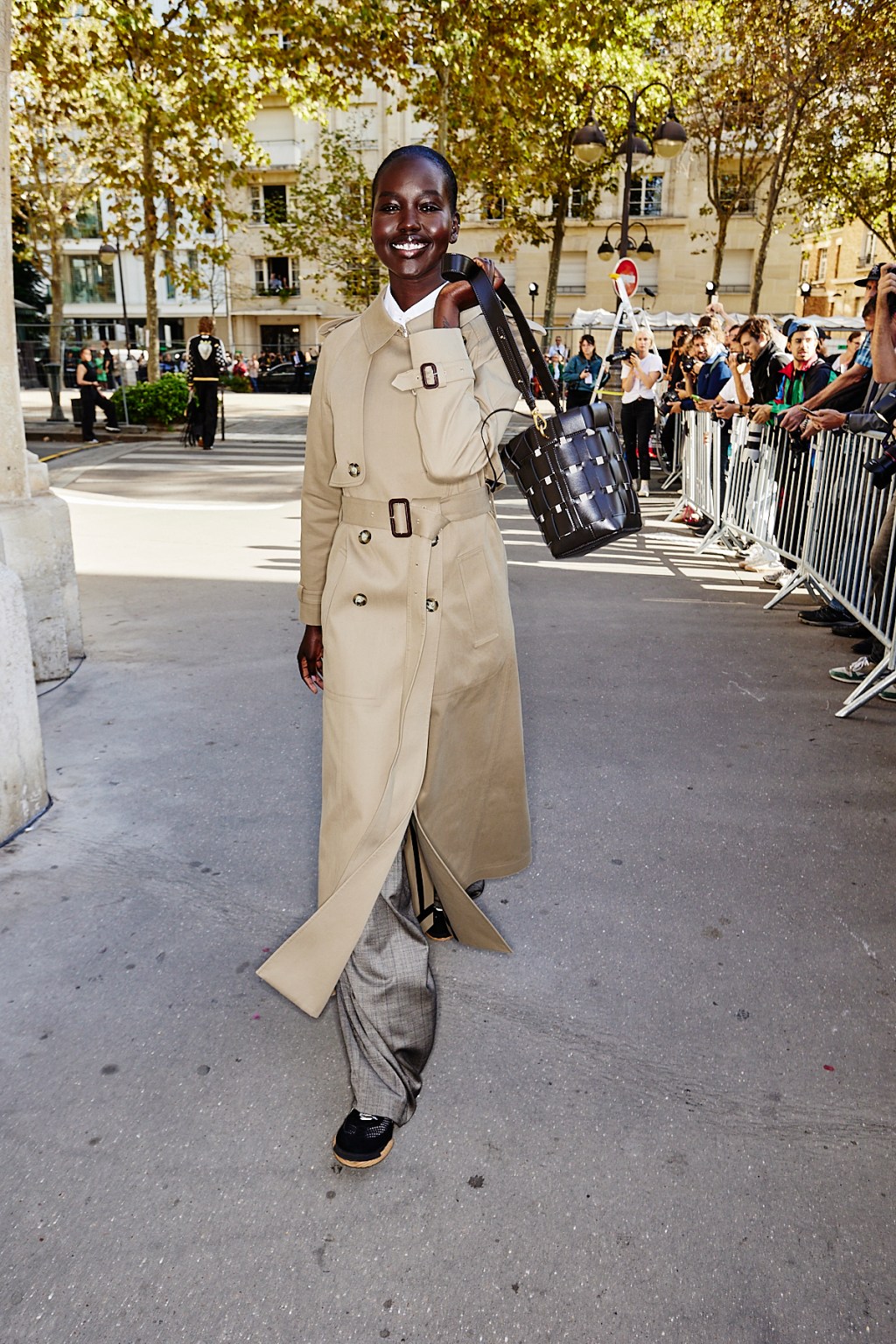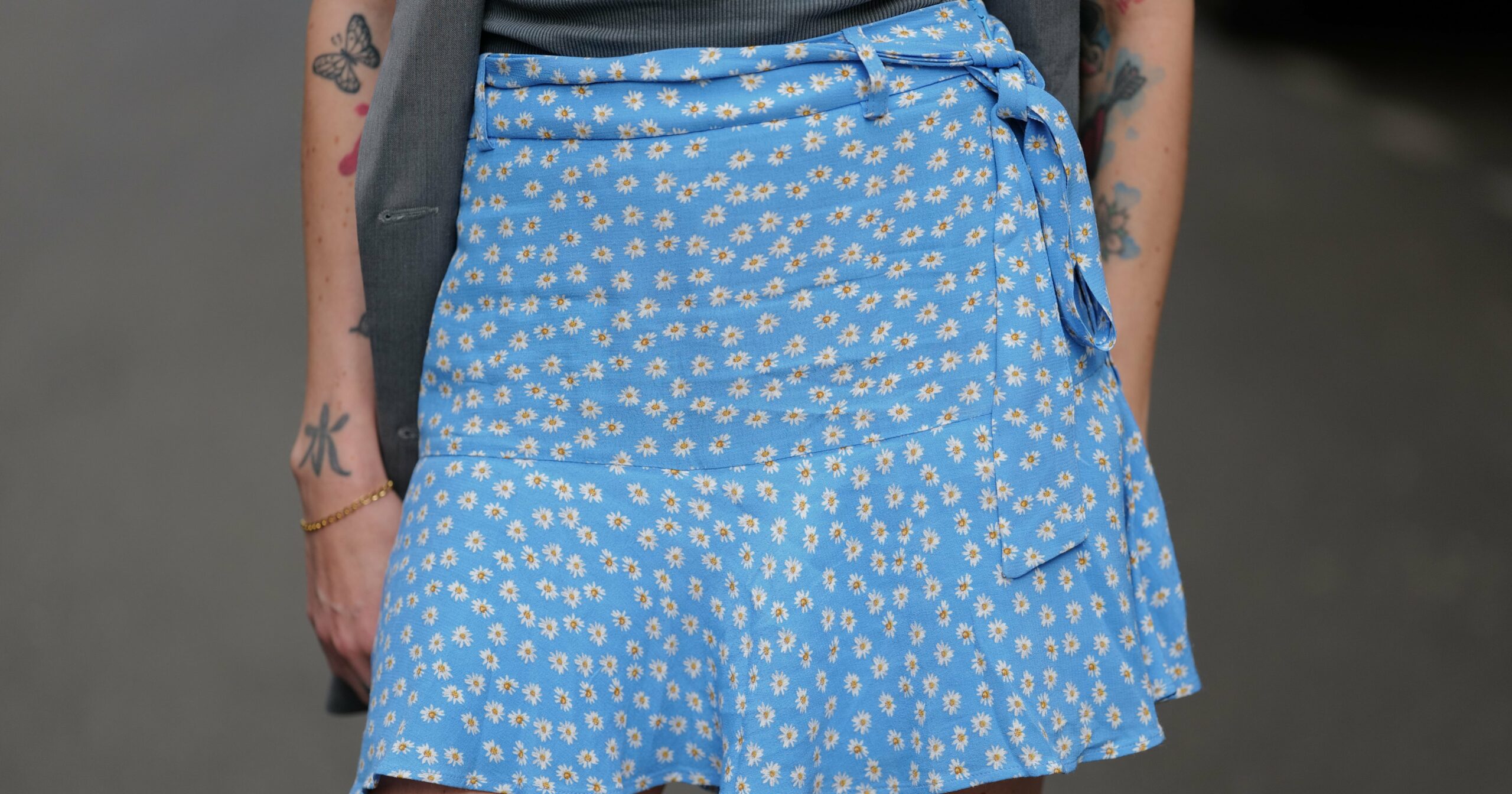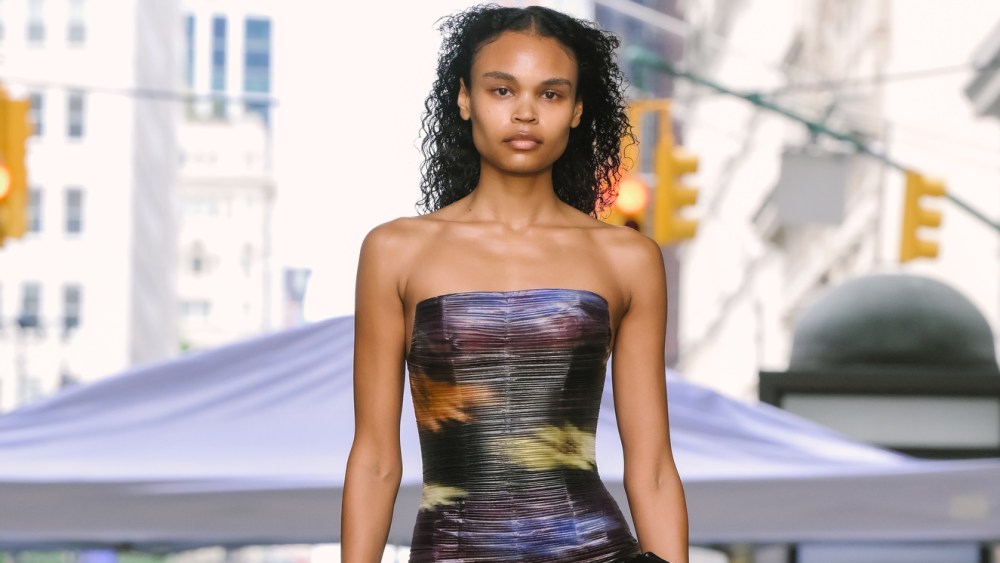LONDON – Stella McCartney works regularly with a cornucopia of organic materials, from fungi and banana plants to seaweed and rock samphire. Now, she’s adding grape and cork waste to the list, and transforming those materials into bags, and platform shoes.
McCartney has been working with fellow LVMH Moët Hennessy Louis Vuitton brand Veuve Clicquot on a partnership that turns manually-collected grape stems from the Champagne harvest into luxury accessories.
She sent some of those accessories down the runway – with minimal fanfare – during her spring 2024 show during Paris Fashion Week last month. The open-air runway show, which was set up like a street market, featured a selection of bags, while the full collection is due to land on shop floors in March.
McCartney, who also serves as sustainability advisor to LVMH founder, chairman and CEO Bernard Arnault, worked the grape leather into three Frayme bags and a bottle holder containing Veuve Clicquot Yellow Label.

She has also created two Elyse sandal styles, which also feature a platform wedge made from recycled cork waste collected from the Veuve Clicquot cellars in Reims, France.
According to LVMH, the grape material was created in less than 18 months and helps to reduce two great sources of greenhouse gas emissions: leather and winemaking.
The company added the grape stems have been sourced with full traceability from the environmentally-certified Grand Cru vineyard of Bouzy in Champagne, which Madame Clicquot purchased 200 years ago.
Jean-Marc Gallot, CEO of Veuve Clicquot, said the grape leather was the result of a “strong collective effort and our expertise in regenerative agriculture. It fills me joy, that beyond crafting one of the best Champagnes, our grapes can now also contribute to drive a brighter future in fashion.”
Asked how the collaboration came about, McCartney said that she set a challenge for LVMH.
“I’d been looking at cross-industry collaboration within the group, and one day I said to Mr. Arnault ‘You know I’m putting bags down my runway made from grape skin waste from the Italian wine industry. Give me one of your brands and let me use that waste,’” McCartney said.

She added her brand and the Champagne house “are very aligned in their values, which was a real selling point for me. Not only was Madame Clicquot a pioneering woman in her field, the house has been prioritizing sustainable and circular methods in their processes for many years now, so it felt like the perfect partnership.”
Asked whether there were any challenges working with the grape material, McCartney argued that it looks, feels and lasts the same as real leather.
“You truly cannot tell the difference. It also has the ability to be available at scale, which is something that excites me because I get to create and design great fashion while at the same time I am pushing boundaries. I get to challenge an industry that is really old fashioned and still works with the same five to ten materials that it’s worked with for the last hundred years,” she said.
Working with cork waste was an “exciting” bonus, McCartney added.

“Cork is very sustainable. It’s one of the greenest alternatives out there and is 100 percent natural, renewable and recyclable. As well as producing oxygen, harvested cork trees absorb 3-5 times more CO2 than non-harvested trees. To use the waste from the bottles has been amazing,” she said.
According to McCartney and Gallot, the Veuve grapes are grown using regenerative practices, which helps to restore local biodiversity and soil health and to sequester carbon.
Over the past years Veuve Clicquot has been exploring next-generation materials, creating packaging made from vegetal waste, and making all its gift boxes from hemp, a soil-regenerative and CO2-fixing plant.
McCartney has also been helping to pioneer regenerative agriculture in fashion, having supported a regenerative cotton project in Turkey, in partnership with LVMH.
Vegan alternatives to leather are thought to generate less than half the carbon footprint of animal leather. The partners said that by creating next-generation, biobased material using waste, they are creating “scalable, sustainable solutions that are kinder to animals, and the environment.”



